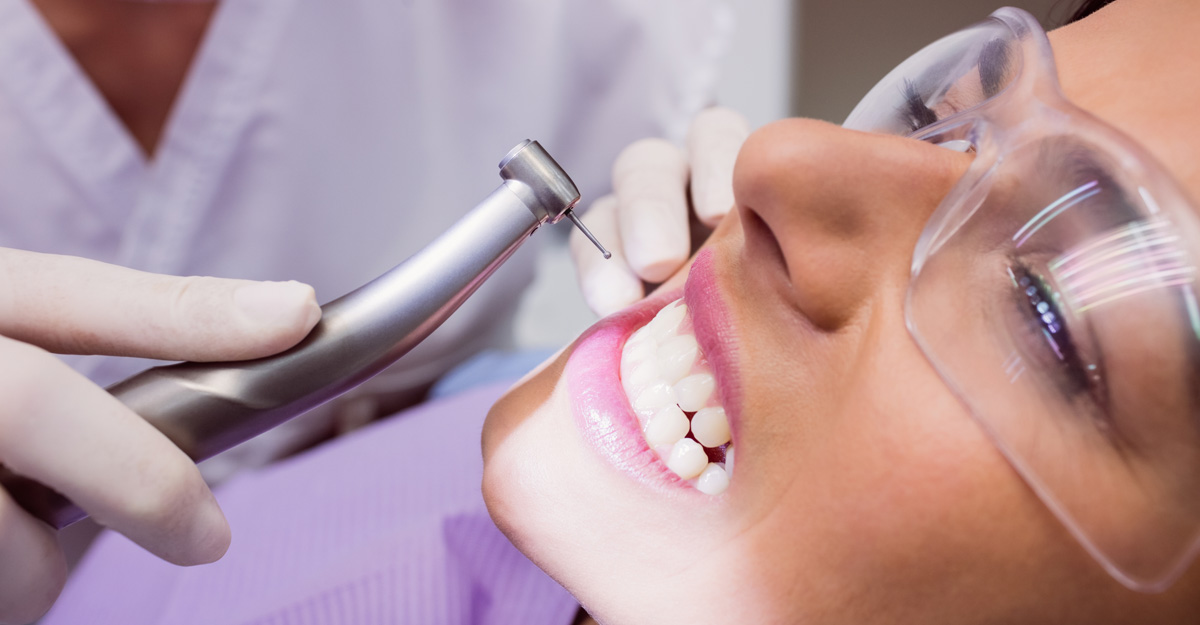Modern dentistry is committed to achieving the best aesthetic results. Tooth decay, fractures and certain types of abnormalities in the anatomical structure of the tooth can successfully be solved using aesthetic restorative materials. Crown, bridge and veneer placement, as well as teeth bleaching, are some of the most common procedures that patients need and ask for.

Tooth decay (also known as dental decay, dental caries or tooth cavities) is the most common oral disease. Its treatment is a straight forward procedure, often requiring a single visit to the dentist. Our patient-centered approach, combined with the use of local anaesthesia, helps make a visit to the practice a pleasant, comfortable experience. Tooth decay requires early treatment to prevent damage of the deeper layers of the tooth. Delaying treatment could cause a need for extra procedures and may compromise the success of a treatment later on. Every 6 months, during regular visits, your dentist will check your teeth and look for tooth decay, if there is any. Tooth decay usually causes no symptoms, pain or discomfort in the early stages, making it almost impossible to detect by the patient alone. Sometimes, even a dentist will need extra diagnostic procedures, such as an X-ray.
In the later stages, tooth decay affects deeper layers of the tooth and can reach dental nerves and blood vessels, causing pulpitis (inflamation of dental pulp), pulp necrosis, pulp gangrene (infection of necrotic pulp), and parodontitis (infection of the surrounding bone). These complications of tooth decay require additional therapeutic procedures, such as root canal treatment, root resection, as well as post and crown placement due to excessive loss of the tooth substance. All this prolongs the treatment and raises the cost. Tooth decay and its complications could lead to tooth loss, but also severe head and neck infections. These consequences emphasize the importance of well-timed tooth decay treatment.
Composite materials are the most commonly used materials for tooth fillings. The main advantages of composite materials (compared to amalgam) are minimal tooth preparation and their aesthetic qualities, blending with natural look of the tooth. A wide choice of color, transparency and special pigments enables your dentist to make unique fillings. Glass-ionomer cements are often used for fillings in children. They release fluorides for a long period of time, successfully preventing tooth decay.

Fillings can last for many years, but micro-crack(s) between the tooth and a filling can appear over time. This is the place where dental plaque is retained and accumulated. It is impossible to reach in order to keep a good oral hygiene. This causes tooth decay. Composite filling can also change color after some time, and that could be the reason for its replacement. This is why regular check-ups are very important. Your dentist will diagnose possible changes before any symptoms appear. In addition, the durability of a filling also depends on patient’s risk for tooth decay, bad habits (bruxism or tooth grinding) and oral hygiene.
Inlay is a kind of tooth filling made in dental laboratory, after the impression is taken by your dentist. Before the impression, the dentist will prepare the tooth by removing the decay and shaping the cavity for the filling. Inlay is usually made of ceramics, which is very aesthetic, but it can also be made of composite material or gold. After it is made in dental lab, it is then cemented. When a larger part of the tooth is missing, an onlay is made.
Dental trauma colud happen to anyone, however children and people participating in certain sport activities are most likely to be affected. Upper incisor teeth are at highest risk, especially if they are protruding. In order to reduce the risk of trauma, it is advisable that the position of protruding incisors is corrected by an orthodontist. In case of an injury, an immediate visit to the dentist is required in order to assess the degree of trauma, check the surrounding soft and hard tissues as well as the vitality of the tooth and suggest the best treatment plan.
In an event of tooth crown fracture, there are several aesthetic solutions. In cases where enough tooth substance is left after an injury, composite materials are used to restore the tooth. If defect is too big for this kind of restoration, a ceramic or metaloceramic crown can be made. Additionally, a root canal treatment and a fiber post may be neccessary. Severe tooth trauma and tooth avulsion (complete displacement of a tooth from its socket in the bone) often lead to the loss of a tooth. The missing tooth can be replaced with a dental implant or bridge.

Atypic tooth shape can successfully be corrected with the use of composite materials. Upper lateral incisors are most commonly affected. If a minor correction is required, it can be done in a single visit. If the tooth needs an extensive reshaping, an impression is taken at the dentist. Later on, dental technician will make a dental cast in the lab and plan the desired shape of the tooth with the dentist. An individual mold is made, which will help your dentist reshape the tooth. Sometimes it is not possible to reshape the tooth with composite materials, so veneers or crowns may be neccssary.
In order to achieve the best esthetic results possible, non-metal restorations are often required (non-metal crowns, bridges, veneers). Read more in the section Crowns, bridges, veneers, dentures.
By using teeth bleaching products, containing carbamide-peroxide or hydrogene-peroxide, teeth color can be made several shades lighter. Read more in the section Teeth bleaching.